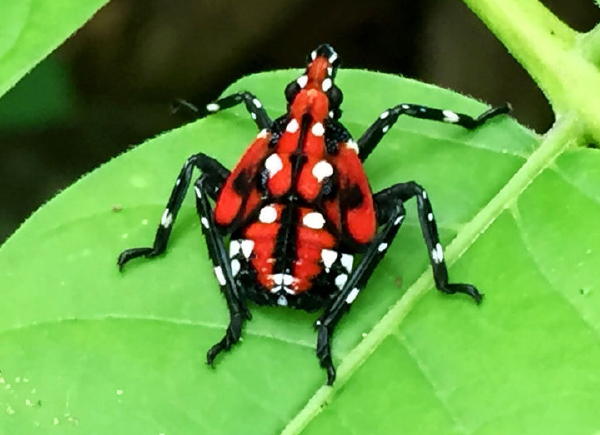
The West Virginia Department of Agriculture is urging farmers, loggers, hunters and birdwatchers to be on the lookout this spring for a southbound hitchhiking insect that poses a risk to the state's forests, orchards, farms and gardens.
The Spotted Lanternfly, believed destined for West Virginia from populations in New York, Pennsylvania, northern Virginia and Delaware, shouldn't be too hard to identify.
In its adult stage, its 1-inch-long, half-inch-wide body is topped with large, visually striking wings. A scarlet-colored rear set comes equipped with black spots at the front and black and white bars at the rear, while the bug's fore wings are light brown with black spots at the front and a speckled band at the rear.
Native to China, Vietnam and India, spotted lanternflies spread to Japan and South Korea by 2006, and were first detected in the United States in 2014. The invasive insects are believed to have arrived in eastern Pennsylvania in the form of an egg mass attached to a shipment of stone from Asia.
Since then, spotted lanternflies have moved into 13 Pennsylvania counties, and other states.
While the spotted lanternfly's preferred host is another Asian-born invasive species, the tree of heaven, found throughout West Virginia, the insect is reported to feed on 70 species, varying from plants like cucumbers and basil to trees such as maple and walnut.
The potential consequences of this insect on the West Virginia orchard industry are somewhat unknown at this time.
On the positive side, the insect appears to be easily controlled with pesticides and does not feed on the fruit itself.
| 


